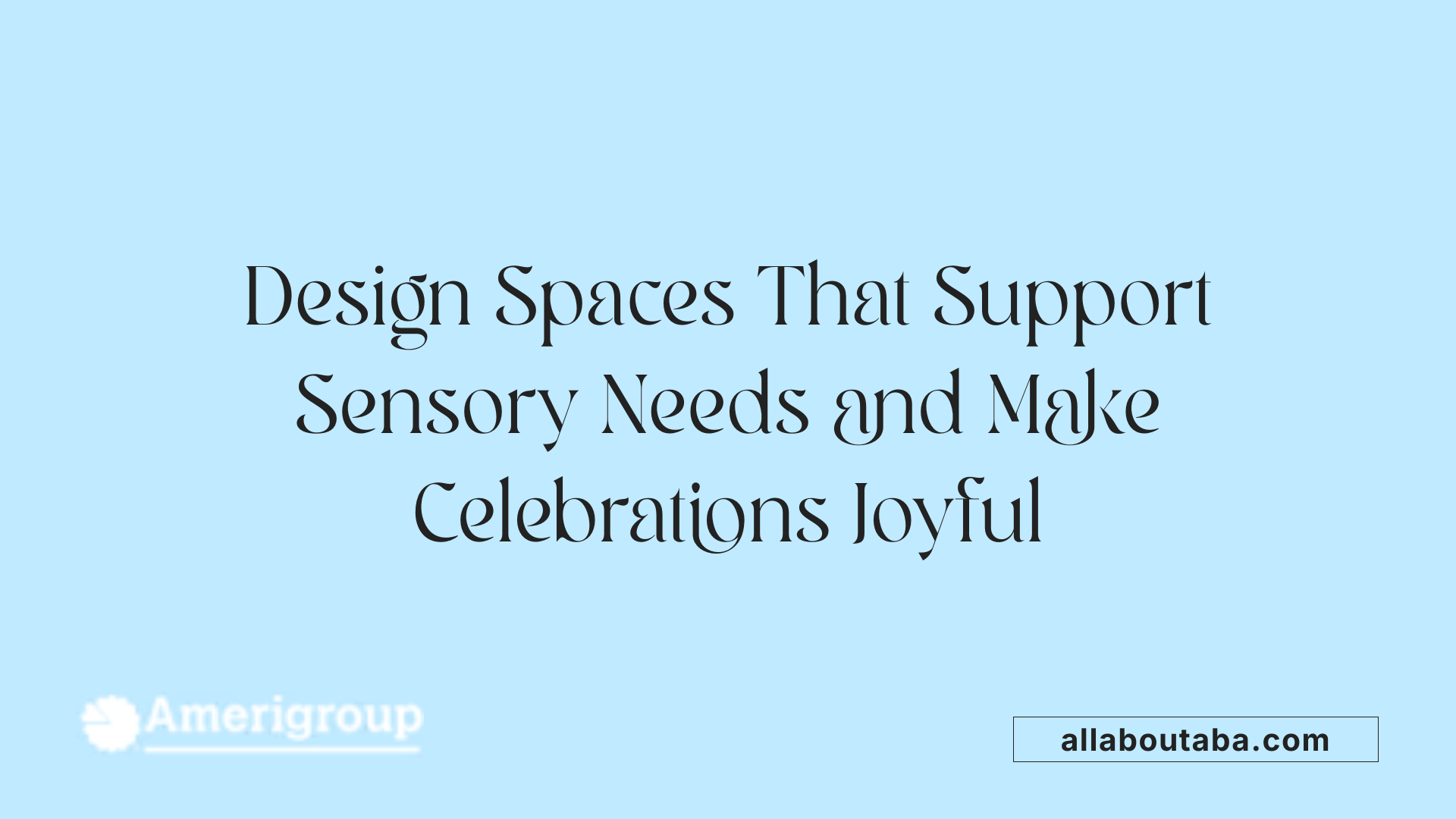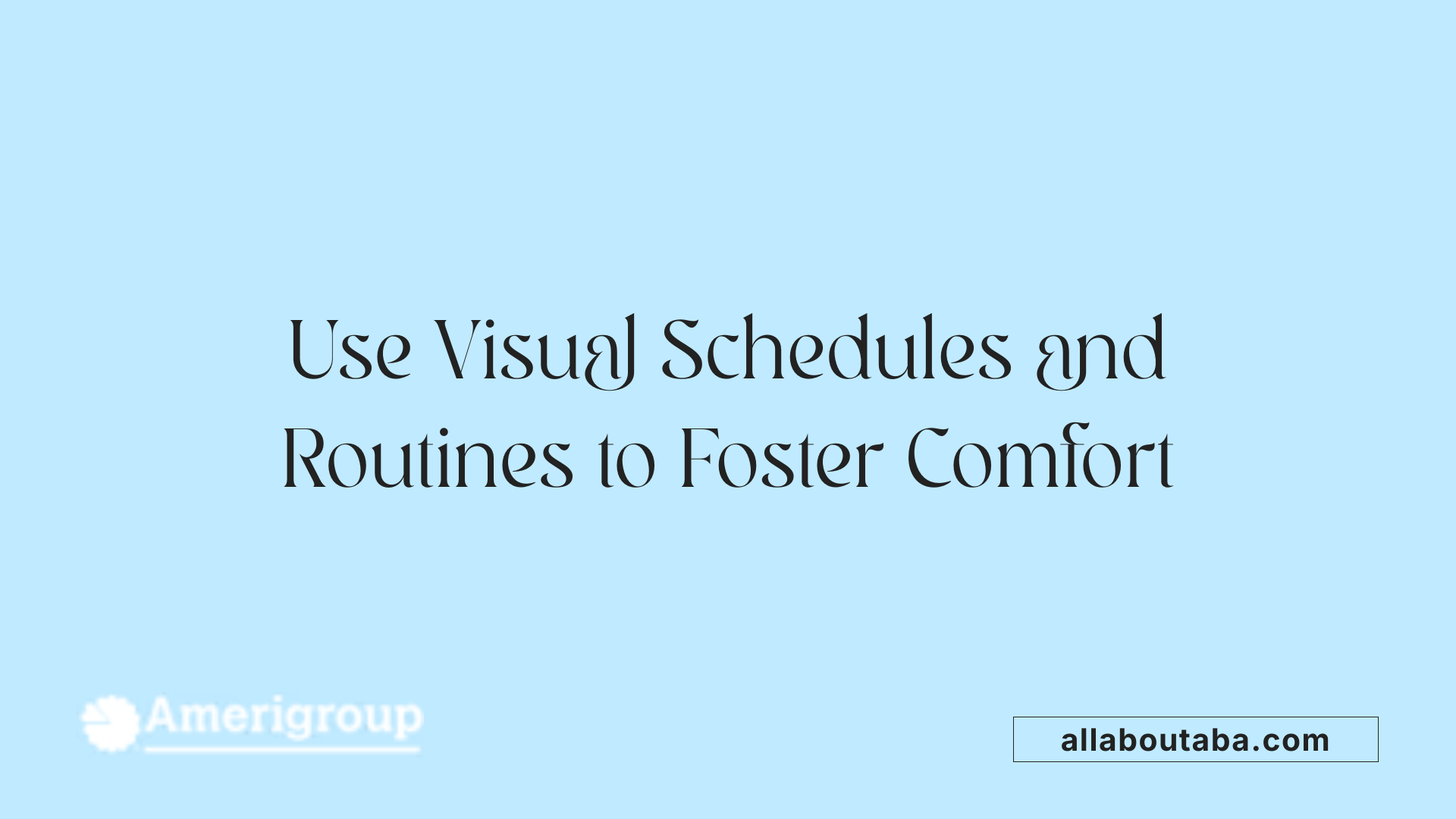Making Holidays Accessible and Enjoyable for All
Holidays are a time of joy, togetherness, and tradition. However, for children and adults with autism, sensory sensitivities and routines can make festive celebrations overwhelming and stressful. Creating an autism-friendly holiday celebration involves thoughtful planning, environmental adjustments, and inclusive activities. This guide provides comprehensive strategies to ensure that holiday festivities are welcoming, comfortable, and enjoyable for everyone.
Designing Sensory-Friendly Environments

What are effective strategies for accommodating sensory sensitivities during holidays?
Creating a sensory-friendly holiday environment starts with understanding and addressing the sensory sensitivities of individuals, especially children with autism. Implementing effective strategies can significantly reduce stress and promote an inclusive, joyful celebration.
One of the most helpful approaches is to create a calming environment by using soft, gentle decorations and lighting. Avoiding flashing or overly bright lights helps prevent visual overstimulation. Instead, opt for static, warm, and dimmable lights, and incorporate natural elements like plants or neutral-colored ornaments to foster a soothing ambiance.
Designating quiet zones and sensory spaces within the home or venue provides a retreat for individuals who become overwhelmed. These areas can include soft cushions, weighted blankets, or sensory toys, giving individuals a chance to self-regulate without feeling isolated. Providing noise-canceling headphones or earplugs can also help manage auditory sensitivities caused by loud music, chatter, or festive sounds.
Involving individuals in the preparation of the environment—such as choosing decorations or setting up sensory corners—can also make the space feel more familiar and comfortable. Establishing a predictable routine using visual schedules or social stories helps clarify what to expect, reducing anxiety related to unexpected changes. Communicating these plans with family and friends ensures everyone is aware of specific needs and knows how to support comfort.
Planning activities that are adaptable to sensory preferences allows participation without overload. For example, offering quiet crafts, sensory bins, or calm listening areas alongside more active festivities can accommodate different comfort levels. Providing sensory supports like fidget toys or weighted blankets during events offers additional reassurance.
In summary, accommodating sensory sensitivities involves a combination of environment adjustments and proactive communication. By creating calming physical spaces, incorporating sensory supports, and fostering understanding, holiday celebrations can be more inclusive, enjoyable, and less stressful for individuals with sensory sensitivities.
| Strategy | Description | Additional Notes |
|---|---|---|
| Use calming decorations and lighting | Choose static, warm lights and soothing decor | Avoid flashing lights and strong scents |
| Create quiet zones | Designate safe spaces for calming and regulation | Furnish with sensory toys and comfort items |
| Incorporate sensory supports | Use noise-canceling headphones, weighted blankets, fidget toys | Support self-regulation and comfort |
Preparing a Visual and Routine-Based Framework
 Creating a holiday celebration that is inclusive and enjoyable for children with autism involves thoughtful planning centered around visual supports and routines. One of the most effective strategies is using visual schedules and social stories to prepare children for what to expect.
Creating a holiday celebration that is inclusive and enjoyable for children with autism involves thoughtful planning centered around visual supports and routines. One of the most effective strategies is using visual schedules and social stories to prepare children for what to expect.
Visual schedules provide a clear, step-by-step outline of the day’s activities. This helps children understand the sequence of events, reducing anxiety caused by unpredictability. Using pictures or symbols to represent each activity, such as decorating, gift opening, or meal times, makes it easier for children to follow along.
In addition to visual schedules, social stories are valuable tools for explaining social situations and routines. These stories, often illustrated, describe typical holiday activities, social expectations, and appropriate behaviors in a simple, reassuring way. This preparation can alleviate fears and clarify what will happen, especially during unfamiliar situations.
Maintaining routines during the holiday season is crucial. Consistent sleep schedules, meal times, and familiar activities help children feel secure. When routines must change, advance preparation through visual aids and social stories ensures children understand the adjustments.
Offering visual aids like countdown timers or visual calendars can help children anticipate upcoming events, reducing stress and fostering a sense of control. For example, a countdown clock can indicate how many days remain until a family gathering, helping children mentally prepare.
Flexibility is just as important as routine. While maintaining structure, caregivers should be ready to adapt activities to fit the child's needs and responses. Flexible strategies include creating quiet zones, offering sensory breaks, and modifying décor or activities to mitigate sensory overload.
Clear communication with family and friends about the child's needs and the use of visual supports ensures everyone can contribute to a supportive environment. Sharing these tools and plans in advance helps set expectations and promotes inclusion.
Overall, implementing a visual and routine-based framework creates a predictable, calming environment that respects individual sensory sensitivities and fosters enjoyment. This approach helps children with autism participate fully in holiday celebrations, creating joyful memories for the entire family.
Adapting Traditions and Activities Inclusively

What techniques can be used to adapt holiday activities and routines for autistic individuals?
Adjusting holiday traditions to be more inclusive involves a variety of thoughtful strategies. Visual schedules and social stories are invaluable tools—they help prepare children for upcoming celebrations by outlining what to expect in a clear, visual manner. This reduces uncertainty and anxiety, making participation easier.
Creating sensory-friendly environments is equally important. This can include controlling lighting with steady, soft lights instead of flashing or strobe effects, lowering ambient noise levels, and providing quiet spaces or calming zones where children can retreat if overwhelmed. Such adjustments help children manage sensory overload, which is common during festive gatherings.
Maintaining core routines offers a sense of familiarity and security. Keeping consistent sleep schedules, meal times, and familiar activities even during the holiday period helps children feel grounded amidst the change.
Flexibility is key. Offering choices within activities, adjusting expectations, and allowing children to participate at their comfort level respects their individual needs. For example, if a child prefers quieter activities, providing alternate options such as crafts or reading instead of large group games can make the celebration more inclusive.
Effective communication with family members and friends is critical. Explaining the child's needs, discussing potential modifications beforehand, and practicing social interactions through role-playing or rehearsals can foster understanding and support.
Transitions should be carefully planned. Using visual timers or countdown clocks, and discussing upcoming changes, helps children anticipate shifts in routine, reducing stress.
Incorporating children’s interests into activities increases engagement. Interest-based crafts, sensory activities, or themed stories related to their favorite topics can foster joy and participation.
Overall, these techniques—visual supports, sensory accommodations, routine maintenance, flexibility, and clear communication—are vital in creating an inclusive, enjoyable holiday environment for autistic individuals. They allow everyone to partake in celebrations comfortably and meaningfully, promoting understanding, acceptance, and shared joy.
Making Traditions Inclusive and Culturally Respectful
To ensure holiday traditions are inclusive for children with autism, thoughtful adaptations of decorations and themes are essential. Using calmer colors, natural elements, and minimalist displays can significantly reduce sensory overload caused by flashing lights and busy decorations. Creating a soothing environment helps children feel more at ease and engaged.
In addition to visual adjustments, incorporating diverse cultural elements enriches celebrations and fosters understanding. Celebrations can feature symbols from various traditions such as dreidels, kinaras, or diyas, without emphasizing religious aspects. This approach promotes respect for different cultures and broadens awareness among all participants.
Building inclusive traditions involves developing routines and activities that embrace individual preferences. Simple, sensory-friendly crafts, musical activities, and movement-based games can be adapted to accommodate various abilities and sensitivities. Offering options like virtual tours or sensory-friendly gatherings allows children who find large crowds overwhelming to participate comfortably.
Effective planning and community involvement are vital. Engaging families in the process helps tailor activities that are enjoyable and accessible. Flexibility is key; traditions can be modified—like spreading gift-opening over several days or creating quiet, calming spaces during festivities—to reduce stress.
By emphasizing themes of kindness, community, and shared joy, families can create meaningful celebrations that foster inclusion and understanding. These efforts help ensure that cultural diversity and individual needs are respected, making the holiday season a joyful time for children with autism and their families.
Offering Sensory-Friendly Gifts and Decorations
 During the holidays, creating an environment that respects sensory sensitivities can make celebrations more enjoyable for autistic individuals. One way to do this is by selecting gifts that cater to sensory needs. Sensory-friendly gifts such as weighted blankets, textured toys like fidget spinners and Discovery Putty™, and sensory tools like noise-canceling headphones provide comforting sensory input and support emotional regulation.
During the holidays, creating an environment that respects sensory sensitivities can make celebrations more enjoyable for autistic individuals. One way to do this is by selecting gifts that cater to sensory needs. Sensory-friendly gifts such as weighted blankets, textured toys like fidget spinners and Discovery Putty™, and sensory tools like noise-canceling headphones provide comforting sensory input and support emotional regulation.
Decorations also play a crucial role in setting a soothing holiday scene. Opt for colors that are soft and calming, such as pastel shades or neutral tones, and choose simple, minimalistic designs that avoid visual clutter. Using natural elements and unscented ornaments can help reduce overwhelming scents associated with traditional holiday decor.
Incorporating sensory activities into holiday festivities fosters inclusion and engagement. For example, making soft, plush ornaments or participating in quiet movies and craft sessions can offer calming sensory experiences. Creating designated calm spaces with gentle lighting and comfortable furnishings allows children to retreat when overwhelmed.
Overall, thoughtful gift selection and decor choices—highlighting simple textures, soft colors, and sensory-friendly activities—contribute to a more inclusive, comforting, and joyful holiday environment for everyone. These strategies help autistic children and their families enjoy the festive season while feeling secure, accepted, and engaged.
Embracing Diversity and Building Joyful Traditions
Creating an inclusive holiday celebration for children and families with autism involves careful planning, environmental adjustments, and meaningful adaptations to traditions. By prioritizing sensory sensitivities, promoting predictable routines, and fostering understanding among family and community members, you can craft a festive environment that is both joyful and accessible. Remember, the goal is to celebrate with compassion, flexibility, and respect for individual needs, turning holiday festivities into memorable moments of connection, support, and shared happiness for all.
References
- How I make the holidays 'autism friendly'
- Creating an Autism-Friendly Holiday: Strategies for a Joyful Season
- How to make the holidays more meaningful for yourself and your ...
- Creating an Autism-Friendly Christmas - Childwise ABA
- Autism and the Holidays: 11 Tips for Inclusive Celebrations
- Autism-Friendly Christmas: The Ultimate Guide
- Autism-Friendly Considerations for Celebrating the Fourth of July
- Creating a Sensory-Friendly Holiday Environment - Measuring Minds
- Sensory-Friendly Holiday Strategies for a Peaceful Celebration







